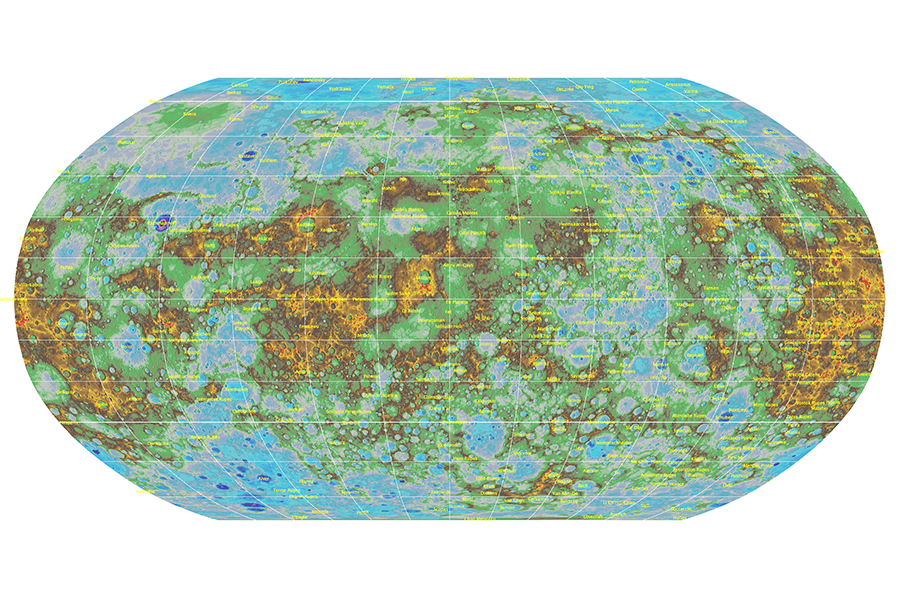Amazingly detailed topographical map adds textured view of Mercury
Loading...
Researchers have released the first topographical map of Mercury’s entire surface, providing a highly detailed view at the planet’s craters and volcanoes.
Using images from NASA’s MESSENGER spacecraft, which has made 4,104 orbits around our solar system’s smallest-known planet, scientists also mapped the Mercury’s northern pole and its highest and lowest points. In addition to providing a wealth of scientific information, the new maps and an accompanying digital animation also give a much more detailed glimpse of the planet, Space.com reports.
“The wealth of these data, greatly enhanced by the extension of MESSENGER's primary one-year orbital mission to more than four years, has already enabled and will continue to enable exciting scientific discoveries about Mercury for decades to come," Susan Ensor, a software engineer at the Johns Hopkins University Applied Physics Laboratory (APL) and manager of the MESSENGER Science Operations Center, said in a statement.
The effort was a collaboration between scientists at the US Geological Survey, the National Aeronautics and Space Administration, Arizona State University, Carnegie Institute of Washington, and the Johns Hopkins Applied Physics Laboratory.
The digital animation is the result of a global digital-elevation model of Mercury. It combines more than 100,000 images taken by MESSENGER, which orbited the planet for four years before researchers deliberately crashed it into the surface of the planet once its mission was completed.
“This product reveals the entirety of the innermost planet of the solar system, less than half glimpsed during the three flybys of Mercury carried out by the Mariner 10 spacecraft over 40 years ago,” Ralph McNutt, MESSENGER team member and Johns Hopkins University Applied Physics Laboratory scientist, said in a USGS statement.
The maps and the animation offer a closer look at the planet’s highest and lowest points. Mercury’s highest elevation is just south of the equator, or about 2.5 miles above the planet’s average elevation. The lowest point is in Rachmaninoff’s basin, which is believed to hold some of the planet’s most recent volcanic deposits. That point is more than three miles below Mercury’s average elevation, USGS says in its statement.
The researchers say the creation of the maps represents a wealth of information about the planet’s surface that wasn’t available before MESSENGER began its mission in 2004.
Compiling all of those images into a coherent picture was no small feat, given the variations in shadows and brightness levels that appeared as the spacecraft moved around the planet's surface and as the sun rose and set.
Researchers pushed a new software created by USGS' Astrogeology team to new limits, in an effort that became the largest dataset ever processed with the center’s software. They say this technology could be used to map other parts of the solar system as well.
“We are eager to apply what we learned from this mapping effort to small bodies such as asteroids and comets, as well as other planets and moons,” Kris Becker, USGS scientist and lead map investigator, said in the statement.







